John Hurrell – 5 January, 2010
If you put a gun to my head and demanded to know what my favourite form of visual art was, and I was forced to come up with something, I'd probably say “Grid paintings.”
I used to make Grid paintings centuries ago, and still enjoy looking at (and thinking about) the genre. Mercifully there is still a bit of it about. So this matrix by Darryn George is one that’s features a deep matt red wall. It’s organised around what seem to be twelve modules of four vertical units by three horizontal ones. Except these twelve units aren’t identical. They have small skinny horizontal rectangles alternating between the bottom left and bottom right corners of the larger oblongs.
Have a peek at the above photos. You might think, why didn’t John describe them as a grid of six flipped double-units that is two by three? Well look again, it is actually quite complicated. There is a thin ‘frieze’ of three linked slivers of rectangle at the very top, right where you least expect to see them. That’s a cunning device to accentuate the upper and lower edges, bring in vertical symmetry and lock the design optically onto the wall. Otherwise with the dominant retinally advancing red, the top edge you’d get from a solely twelve unit combination would seem to float away while the bottom remained anchored. Those three upper white and black motifs are essential.
Being Nga Puhi, George has used the traditional Maori colour colours of red, white and black, and if you really, really insisted on a rudimentary narrative, you could say they represented bookshelves with the smaller lower motifs depicting books lying flat on their sides so that you see only their spines. A comment about the desirability of recording traditional knowledge before it disappears, perhaps?
The work is beautifully designed, taking advantage of thin elegant white lines to bring a quality of light and delicate exuberance. Executed by a technician it has none of the deliberately stippled and encrusted paint found on George’s usual canvases. This is a notably flat surface.
This is a wonderful multi-layered work; visually not too busy but not too empty either. It’s precisely and airily balanced so that there is no possibility of clutter at intersecting vertical and horizontal white lines. It’s expansive too. The perfect dynamic of minimal patterning to hold your attention.
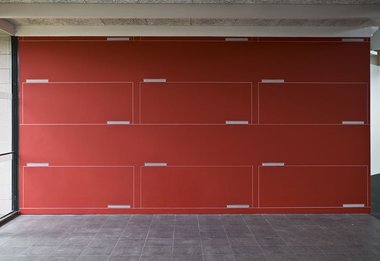


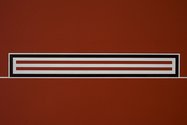
 Two Rooms presents a program of residencies and projects
Two Rooms presents a program of residencies and projects Advertising in this column
Advertising in this column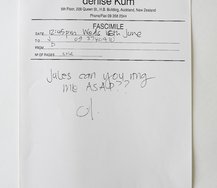
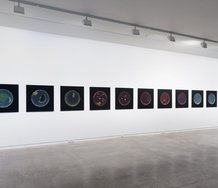
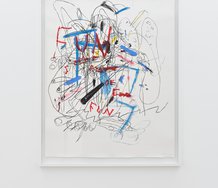

This Discussion has 0 comments.
Comment
Participate
Register to Participate.
Sign in
Sign in to an existing account.